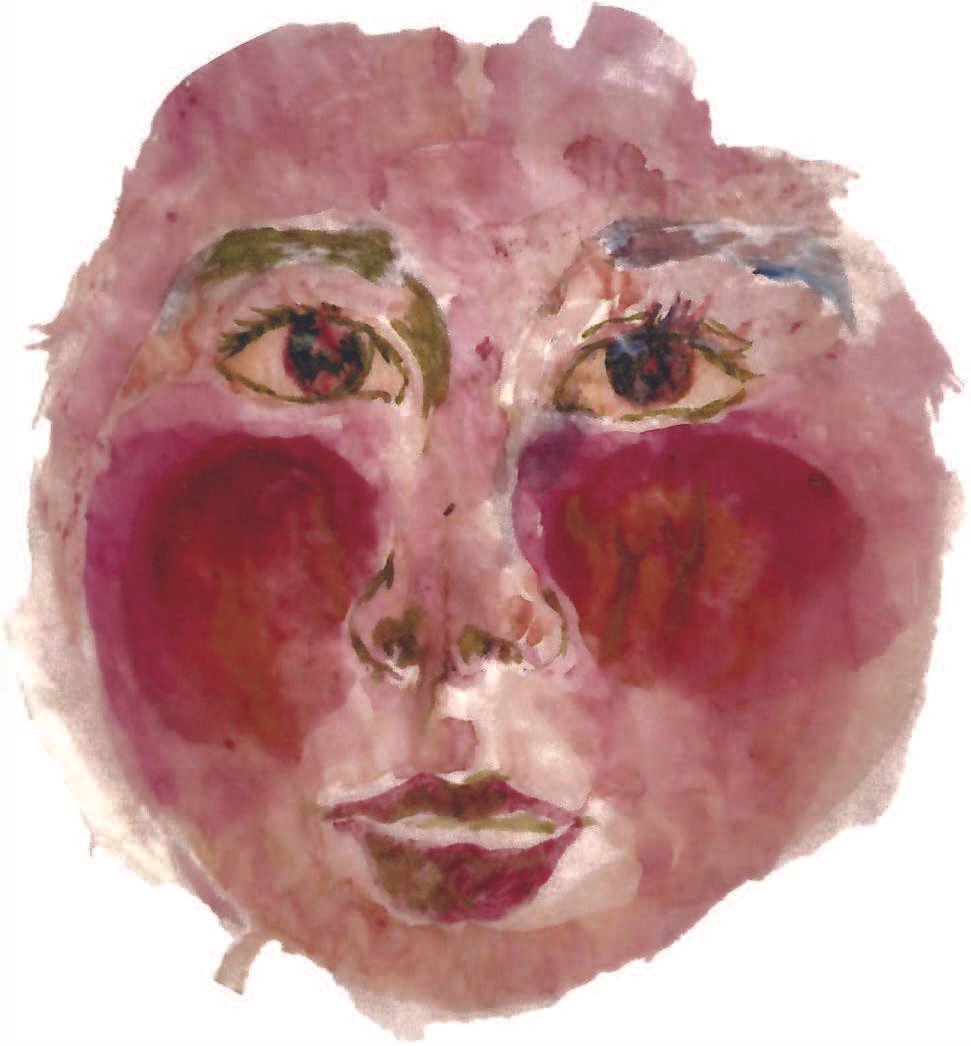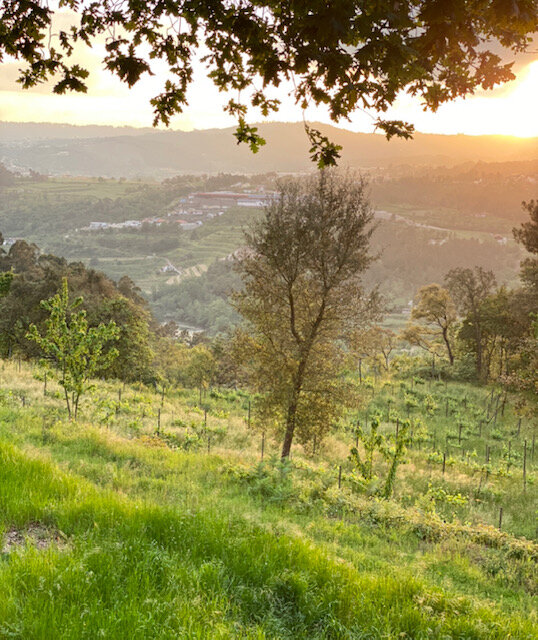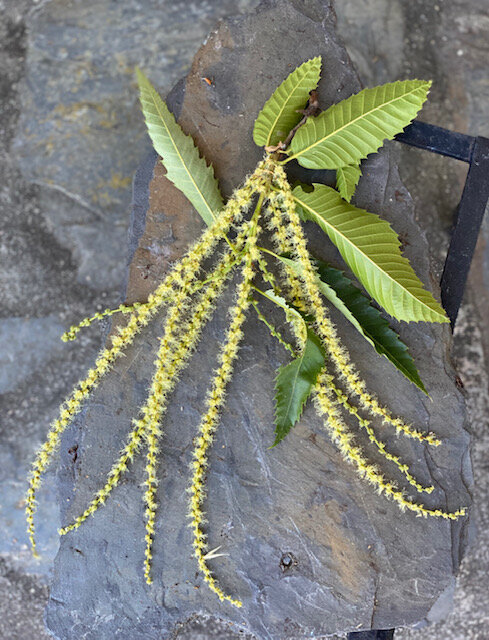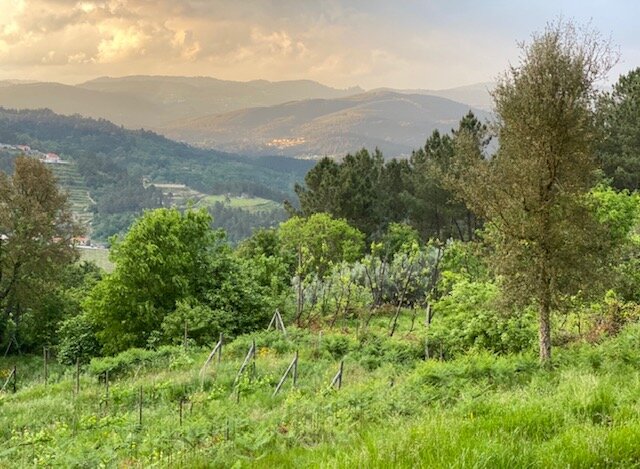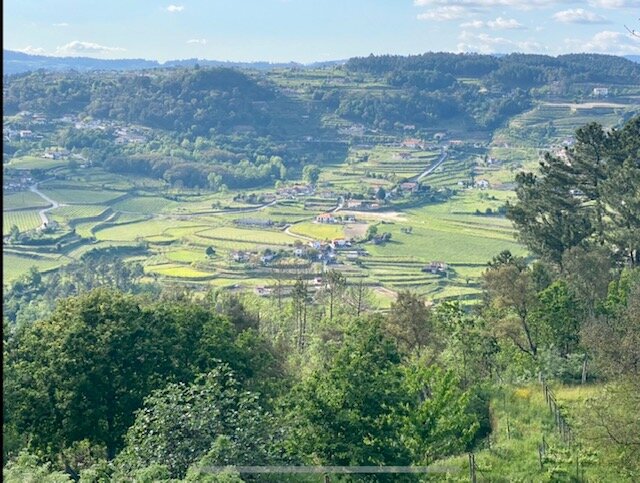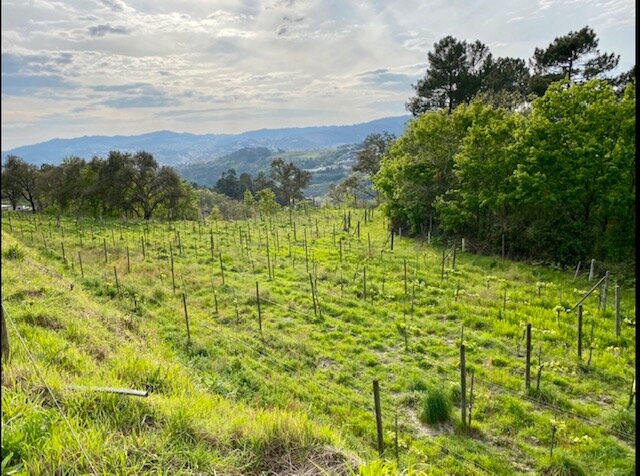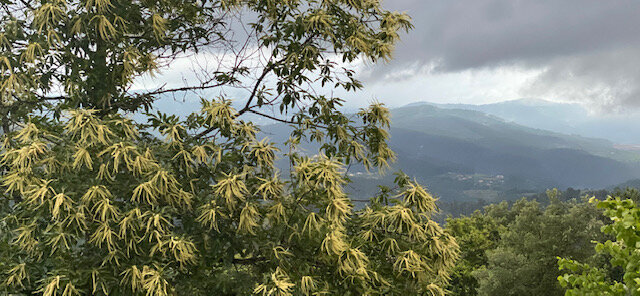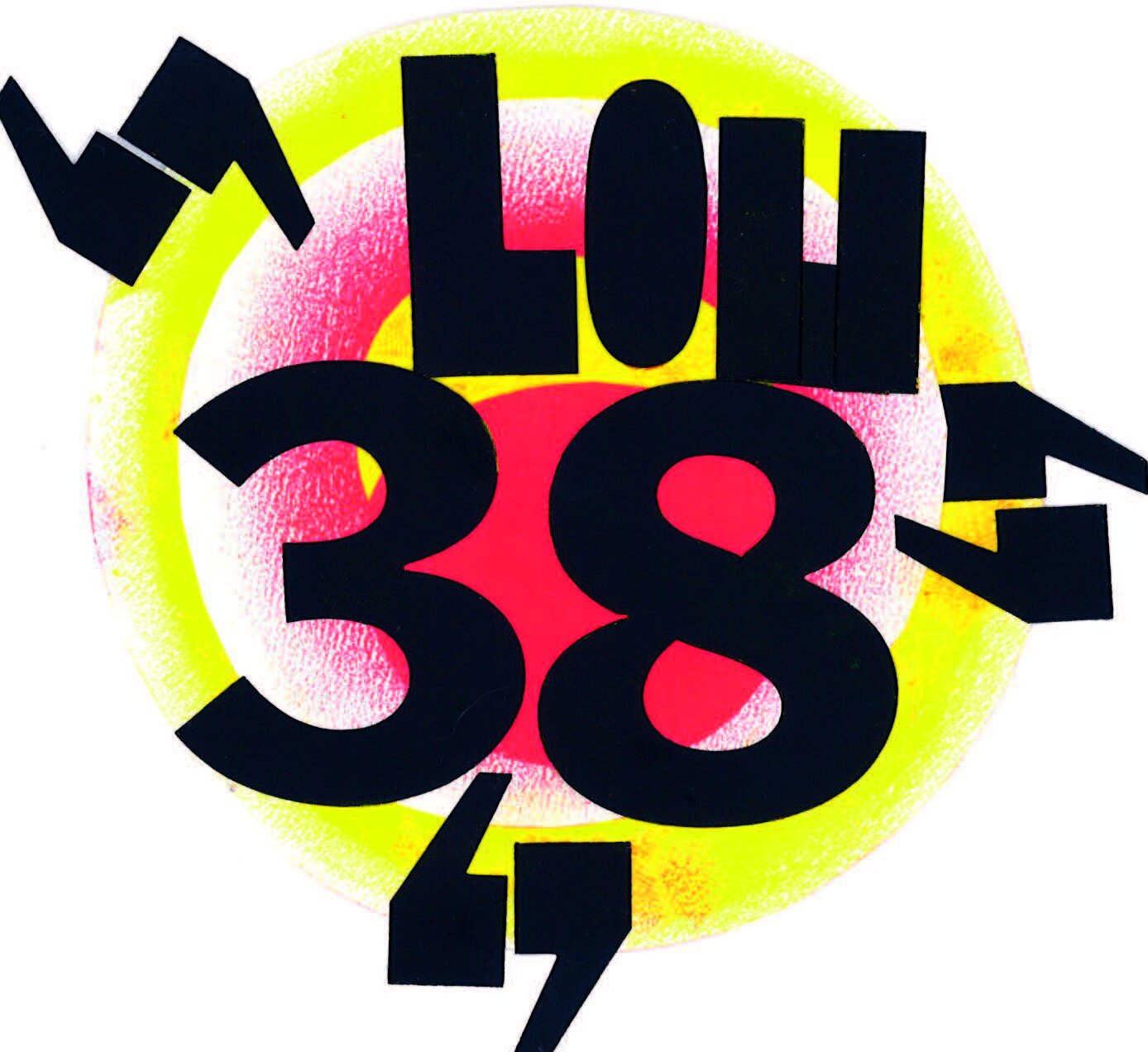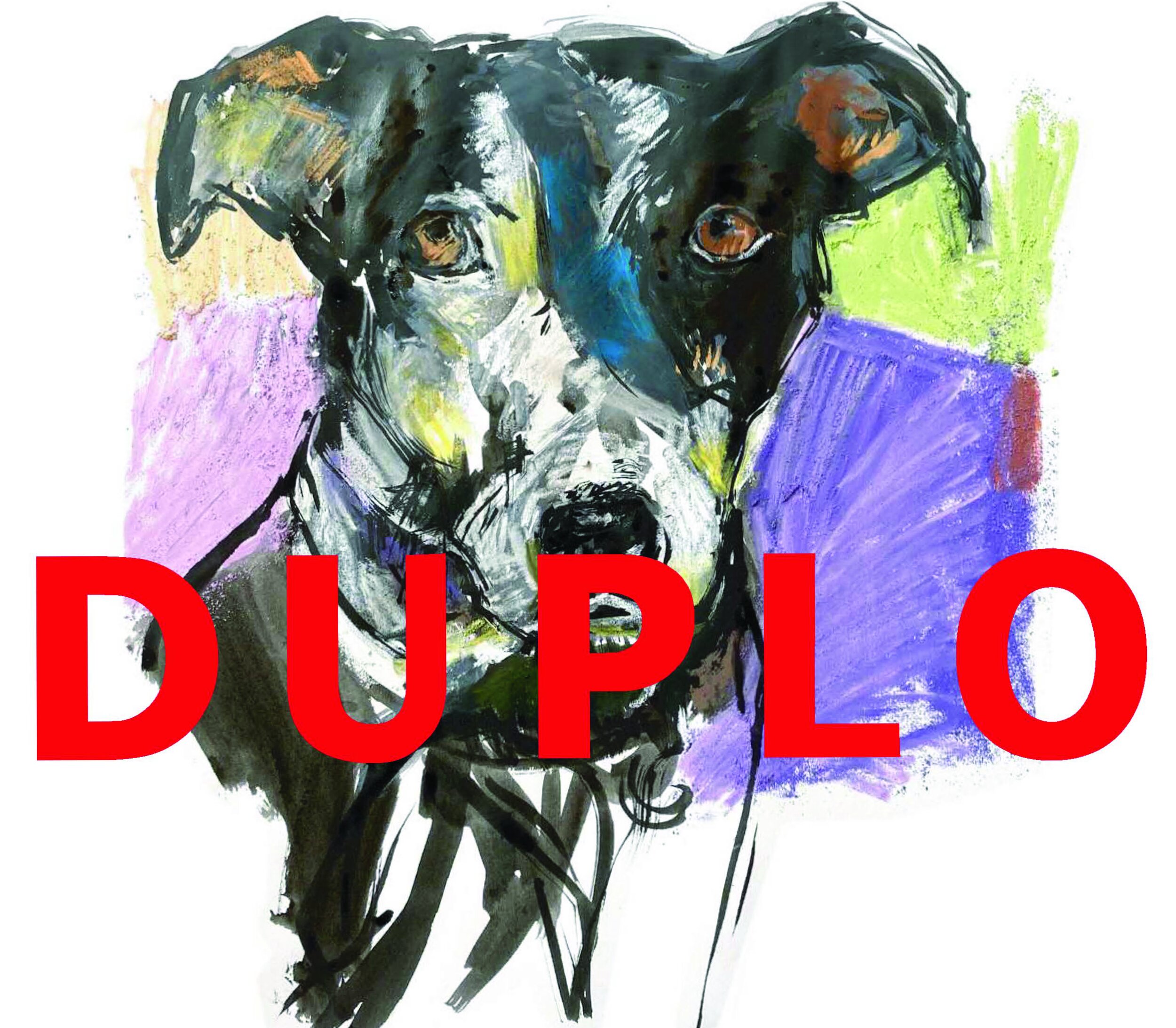Bojo do Luar
(Vinho Verde, Portugal)
The Bojo do Luar project came to life during a trip Savio made to the Vinho Verde region. Here he met Fernando Paiva, a biodynamic producer who has been experimenting with adding ground chestnut flowers to the grapes and must before fermentation began. Meanwhile he’s halted using SO2 altogether since 2017.
Savio was undeterred and saw this as an opportunity: to use the traditional autochthonous varietals of Northern Portugal, with natural high levels of acidity, and apply his knowledge and experience of many decades working with French producers. Together with two local young men, with experience and knowledge of regional viticulture, who were open to experiment new methods in the vineyard and cellar, the Bojo do Luar project started to take shape. The soils started to be fertilized with self-made organic compost, blended with chicken and cow’s manure. In the middle of the rows, a variety of beneficial herbs, recommended by Mr. Paiva, were sewn to further enrich the soils at the beginning of springtime and autumn. To manage plagues, only SO2 and cooper were sprayed.
Using a non-intervention approach in the cellar, which Savio likes to call: “monastic winemaking”, the Bojo do Luar wines started to take shape. The region has a mostly cool temperate climate throughout Spring, then very warm days, and cool nights until the harvest at the end of September. Five red grape varietals and five whites were chosen.
The parcels are located near the Tâmega river, in the foothills of the Serra do Marão mountain range, in the southeastern corner of the Vinho Verde region, with deep granitic soils and south-south-western exposure.
Upon arriving at the cellar, each grape varietal is destemmed and moved with a small percentage of whole cluster to large century-old “talhas” (amphoras), acquired from an old inactive winery in the Serra de São Mamede region bordering Spain to the East.
As stabilizer, 500g of ground chestnut-flower is added per each ton of grape before the fermentation starts naturally and a gentle punch-down is done twice a day to keep the cap soaked.
The time the wine remains with pellicular maceration in the amphoras, once the fermentation is finished, varies according to grape varietal and vintage profile.
There is a minimal intervention throughout the entire process in the cellar. Once the blend for each wine was defined, 25mg/l of SO2 is added at bottling.
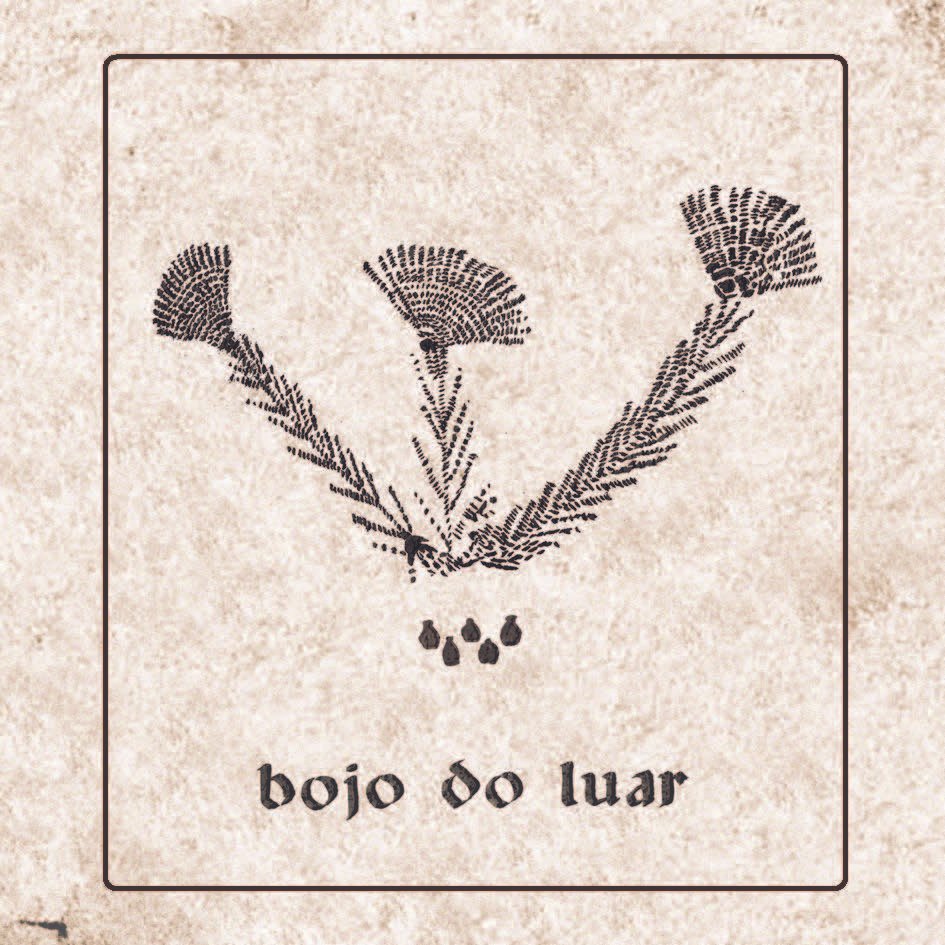
Pet Nat, ‘AZAL’
100% Azal
This is a rare and unique grape varietal from the southeastern Vinho Verde region in Portugal. It is comparable to Chenin (Savennières) and Petit Monseng (Jurançon).There's been very few wines produced from this grape varietal. It is hard to find and easy to fall in love with.
The grapes for this Pet Nat were fermented with skin-contact at a lower temperature, (10ºC) in large format amphoras (1000L-1500L) for four weeks. Before the fermentation ended the mass was pressed and bottled (unfiltered) with around 15mg of residual sugar to finish the fermentation in the bottle. 25ml of SO2 was added at bottling.
Pet Nat, “Luiza”
80% Espadeiro, 20% Loureiro
This Pet Nat is from 80% Espadeiro and 20% Loureiro. Both grapes sourced from Rui Paiva, nephew of Biodynamic producer Fernando Paiva. Rui has 4 hectares of mostly 20-year-old vines in the Vinho Verde area of Felgueiras. The harvest was done by three generations, Rui, his 80-year-old father and his nephew. Grapes were placed on 20kg boxes and taken to Bojo do Luar cellar, 7km away. Upon arrival, the grapes were destemmed and moved into "ta/has" (100-year-old, 1.l00L amphoras) and stumped by foot. To each amphora, 1kg of ground chestnut flowers was added and immediately mixed into the mass. The fermentation of the Espadeiro started spontaneously after three days and continued slowly for three weeks. Before it was completed, with around 18g/l of residual sugar left, the mass was pressed, blended with 20% of the Loureiro (Lou 38) and bottled, unfiltered with S02 added at bottling (30ppm).
Pet Nat, “Lou 38”
100 % Loureiro
This Loureiro was sourced from Rui Paiva, nephew of Biodynamic producer Fernando Paiva. Rui has 4 hectares of mostly 20-year-old vines in the Vinho Verde area of Felgueiras. The harvest was done by three generations, Rui, his 80-year-old father and his nephew. Grapes were placed on 20kg boxes and taken to Bojo do Luar cellar, 7km away, by a small pickup truck, in which only 38 boxes could fit at a time. Hence, the inspiration for the name of the wine. Upon arrival, the grapes were destemmed and moved into "ta/has" (100-yearold, 1.l00L amphoras) and stomped by foot. To each amphora, 1kg of ground chestnut flowers was added and immediately mixed into the mass. The fermentation started spontaneously after four days and continued slowly for three weeks. Before it was completed, with around 15g/l of residual sugar left, the mass was pressed and the wine was bottled, unfiltered with no added S02.
Vinho Branco, ‘Doralice’
100% Loureiro
This Loureiro is sourced from Rui Paiva, nephew and neighbor of our friend, Prof. Fernando Paiva, in the nearby town of Lixa. Upon arrival at the cellar, the grapes are destemmed and moved to the stainless-steel tanks to start the fermentation at 15ºC. At this point 500gm/kg of ground chestnut flowers are added and mixed into the mass. These grapes were kept with pellicular maceration for 4 weeks, then pressed and returned to stainless-steel tank to undergo malolactic fermentation. In February it is blended and bottled with the addition of 10% of another Loureiro which was vinified in amphora and had a skin-contact maceration for 4 weeks. At bottling 25mg/l of SO2 is added
Vinho Branco ‘LUA NONA’
Loureiro and Azal
This exquisite wine hails from the steep hillsides of Amarante, within the Vinho Verde region. Crafted from grapes meticulously hand-harvested from Bojo do Luar's vineyards, it embodies a thousand-year-old viticultural heritage. LUA NONA is fermented in amphoras with minimal intervention, featuring a unique addition of chestnut flower for natural stabilization. This unfiltered wine celebrates sustainability, supporting local flora and fauna, and enriches every sip with history and the essence of the Tâmega riverbanks.
Vinho Verde, “Tez”
50% Avesso & 50% Azal
From a small sub area of Baião, a low intervention blend of Avesso and Azal. The Avesso macerates for five months with 10% whole-cluster, while the Azal is directly pressed. Everything is done in stainless steel with half a kilo of ground chestnut flowers added at the pressing of both. Unfiltered.
